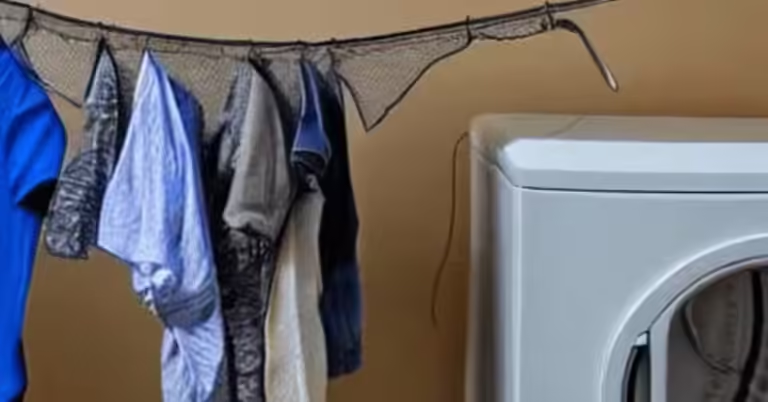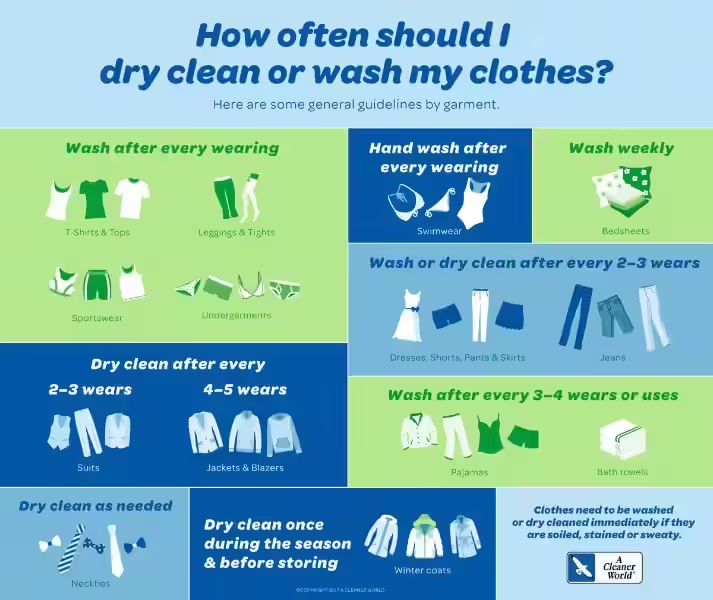How Long Should I Dry My Clothes at the Laundromat?

Stepping into a laundromat can be a whirlwind of activity, especially if you're a first-timer. Between the whirring machines, the scent of detergent, and the occasional friendly chatter, it's easy to feel overwhelmed. One question that often pops up is: "How long should I dry my clothes at the laundromat?"
The truth is, there's no magic number. Drying time at the laundromat depends on a variety of factors, and it's important to understand these nuances to ensure your clothes are dried thoroughly without unnecessary wear and tear.
Factors Influencing Drying Time
Think of your laundry as a complex recipe, and drying time as the cooking duration. Just like different ingredients need different amounts of time on the stove, various factors influence how long your clothes need to dry in the laundromat dryer.
1. Item Type & Fabric
Thick items like towels, blankets, comforters, and jeans are moisture sponges that soak up a lot of water, naturally requiring longer drying times. On the other hand, thin items like underwear and socks dry quickly. Fabric types play a crucial role too. Cotton, for instance, absorbs more moisture than synthetic fabrics like polyester. So, a load of cotton towels will take longer to dry than a load of polyester workout clothes.
2. Load Size
Just like a crowded oven takes longer to cook food, a full dryer load will require more time to dry clothes. This is because the air needs to circulate freely around the items to effectively remove moisture. A smaller load of a few shirts and pants will dry much faster than a full load of towels and bedding.
3. Dryer Efficiency
Not all dryers are created equal. Newer, well-maintained dryers are generally more efficient and use less energy to dry clothes, resulting in faster drying times. Older, less efficient dryers might require longer drying cycles to achieve the same results.
4. Dryer Setting
The heat setting you choose directly impacts drying time. High heat settings dry clothes faster but can also damage delicate fabrics. Low heat settings are gentler but take longer to dry clothes. The key is to find the right balance for your clothes and preferences.
5. Ambient Humidity
Have you ever noticed how your clothes take longer to dry on a humid day? That's because high humidity hampers the dryer's ability to effectively remove moisture. The air is already saturated with moisture, making it more difficult for the dryer to extract moisture from your clothes. This means your clothes might need a bit more time in the dryer, especially if you live in a humid climate.
Tips for Efficient Drying
Now that you understand the factors influencing drying time, let's explore some practical tips to optimize your laundromat drying experience.
1. Wash Similar Items Together
Avoid mixing items with drastically different drying times, such as towels and thin shirts, in the same load. This prevents overdrying thinner items while thicker items might still be damp. Separate similar items, like towels with towels, jeans with jeans, and delicate items with delicate items, to ensure everything dries evenly.
2. Clean Lint Filter
A clogged lint filter obstructs airflow, reducing the dryer's efficiency and increasing drying time. Before each load, make a habit of cleaning the lint filter to remove accumulated lint and ensure optimal airflow. This simple step can significantly impact your drying time.
3. Air Dry
If a few items are not fully dry after the dryer cycle, don't fret! Simply hang them to air dry at home. This is a great option for delicate items that might be prone to shrinking or damage in the dryer.
4. Optimize Drying Time
Choose laundromats with modern, efficient dryers and opt for larger dryers when possible. This allows for better air circulation and faster drying times. Also, pay attention to the drying time recommendations on the dryer's control panel and adjust accordingly. You can always add a few minutes if needed, but it's generally better to err on the side of caution.
In Conclusion
While there's no one-size-fits-all answer to how long you should dry your clothes at the laundromat, by understanding the factors influencing drying time and implementing these tips, you can ensure your clothes are dried thoroughly and efficiently. Remember – a little observation and experimentation can go a long way in mastering the art of laundromat drying. Happy drying!
Frequently Asked Questions about Drying Clothes at the Laundromat
How long should I dry my clothes at the laundromat?
A typical load of clothes (medium size) takes around 30 to 40 minutes to dry on a medium setting. However, the drying time can vary greatly depending on factors such as the type of fabric, load size, and dryer efficiency.
What factors affect drying time?
Several factors can influence the time it takes to dry your clothes, including:
* Item Type & Fabric: Thicker items like towels and jeans take longer to dry than thinner items like socks and underwear.
* Load Size: Larger loads require longer drying times.
* Dryer Efficiency: Newer, well-maintained dryers are more efficient and dry clothes faster.
* Dryer Setting: Using a higher heat setting generally shortens drying time.
* Ambient Humidity: High humidity can slow down the drying process.
How can I shorten the drying time?
You can optimize drying time by:
* Washing Similar Items Together: Avoid mixing items with drastically different drying times in the same load.
* Cleaning Lint Filter: A clogged filter reduces dryer efficiency, so make sure to clean it regularly.
* Air Dry: If a few items are not fully dry, hang them to air dry at home.
* Optimize Drying Time: Use larger dryers and choose laundromats with modern, efficient machines.








